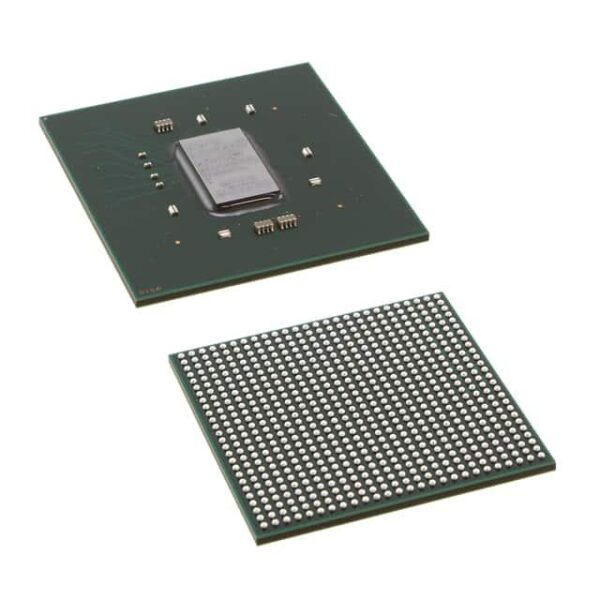| Specification of XC7K160T-3FFG676E | |
|---|---|
| Status | Active |
| Series | Kintex?-7 |
| Package | Tray |
| Supplier | AMD |
| Digi-Key Programmable | Not Verified |
| Number of LABs/CLBs | 12675 |
| Number of Logic Elements/Cells | 162240 |
| Total RAM Bits | 11980800 |
| Number of I/O | 400 |
| Number of Gates | – |
| Voltage – Supply | 0.97V ~ 1.03V |
| Mounting Type | Surface Mount |
| Operating Temperature | 0C ~ 100C (TJ) |
| Package / Case | 676-BBGA, FCBGA |
| Supplier Device Package | 676-FCBGA (27×27) |
Applications
The XC7K160T-3FFG676E is ideal for high-performance computing environments due to its advanced processing capabilities. It excels in applications such as artificial intelligence training, big data analytics, and cloud computing services. This FPGA offers a wide range of I/O pins, making it suitable for interfacing with various external devices.
In industrial settings, the XC7K160T-3FFG676E supports real-time control systems that require high-speed data processing and low-latency operations. Its robust design ensures reliability under extreme conditions, with operating temperatures ranging from -40°C to +85°C.
For automotive applications, this FPGA provides enhanced safety features through its ability to handle complex sensor data processing and control algorithms efficiently. Its integration into modern vehicle systems allows for improved performance and reduced latency in critical functions like autonomous driving and adaptive cruise control.
Key Advantages
1. High clock speed up to 600 MHz, enabling faster processing times.
2. Advanced embedded memory blocks supporting large-scale data storage and retrieval.
3. Low power consumption per gigabit, reducing operational costs.
4. Compliance with multiple industry-standard certifications, ensuring interoperability across different platforms.
Frequently Asked Questions
Q1: What is the maximum operating temperature supported by the XC7K160T-3FFG676E?
A1: The XC7K160T-3FFG676E operates within a temperature range of -40°C to +85°C, providing reliable performance across a broad spectrum of environmental conditions.
Q2: Can the XC7K160T-3FFG676E be used in conjunction with other FPGAs for mixed-signal designs?
A2: Yes, the XC7K160T-3FFG676E can be integrated with other FPGAs using standard interface protocols, allowing for flexible and scalable mixed-signal system architectures.
Q3: In which specific scenarios would the XC7K160T-3FFG676E be most beneficial?
A3: The XC7K160T-3FFG676E is particularly beneficial in scenarios requiring high computational throughput, such as deep learning model inference, real-time signal processing, and high-frequency trading systems.
Other people’s search terms
– High-performance computing FPGA solutions
– Automotive-grade FPGAs for safety-critical applications
– AI-accelerated FPGAs for data centers
– Mixed-signal FPGA design for industrial automation
– Energy-efficient FPGAs for IoT applications





